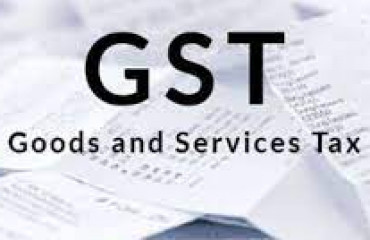The tight restrictions on input tax credit claims mean that for every default by a business’s vendors, the recipient enterprise takes the hit. If vendors delay in uploading their invoices, the recipient business ends up paying that extent of their GST liability in cash until the vendor complies, thereby affecting their working capital.
Come January 2022, businesses in India may find themselves up against an even more stringent restriction on input tax credit (ITC) claims - that of no longer being allowed to claim provisional credit. In addition to the deluge of return filings and invoice reconciliations, businesses will have the added burden of optimising their ITC claims and effectively managing their vendors. Failing which, their working capital and profitability could get severely impacted.
Let's understand how the removal of provisional ITC claims could adversely affect a business's profitability if the step to streamline ITC is not proactively taken.
The restrictions in claiming input tax credit are only becoming stricter
When GST was introduced in 2017, taxpayers could claim ITC on a self-declaration basis, similar to the erstwhile tax laws, i.e. service tax, VAT, etc. The input credit declared by a business was irrespective of whether their respective vendors had uploaded their invoices or filed their tax returns.
In 2019, the government introduced the concept of provisional ITC, allowing businesses to claim only 20% ITC as provisional ITC from the eligible ITC reflected in their GSTR-2A statement. While businesses needed to ensure that they were dealing with compliant vendors only, the 20% leeway was enough to claim provisional ITC on invoices not uploaded by the non-compliant ones.
However, in 2021, this limit got capped at 5% of the eligible ITC reflected in the GSTR-2B. In the 45th GST Council meeting, the GST Council recommended that businesses should not be allowed to claim provisional ITC at all. ITC claims will be restricted only to the extent the respective suppliers furnish their invoices/debit notes in their Form GSTR-1 or through the Invoice Furnishing Facility. These claims must also reflect in the taxpayer's GSTR-2B for them to be allowed ITC.
The dependency on vendors has now become apparent, with the 5% provisional ITC leeway on the verge of being done away with. Now, if vendors don't upload their invoices, businesses lose out big time.
But, how do businesses find out which invoices have not yet been uploaded? Of course, it comes down to exhaustive reconciliation processes that can no longer be left until the year-end. The frequency has to increase, the defaulting vendors identified, and communication sent out to them to urge them to upload.
But is vendor communication enough? With the number of willful defaulters the government is trying to quash, it clearly takes more than that. This means that businesses now need to have a dynamic system in place for reconciliations, communication and following up, and then also have vendor management strategies in place to deal with non-compliant vendors.
Restrictions on input tax credit claims also impact profitability
The tight restrictions on input tax credit claims mean that for every default by a business's vendors, the recipient enterprise takes the hit. If vendors delay in uploading their invoices, the recipient business ends up paying that extent of their GST liability in cash until the vendor complies, thereby affecting their working capital.
And in the event vendors do not upload their invoices at all, what would have been a lawful input tax credit ends up being an expense for the recipient business, directly impacting its profitability. In fact, the issue of inefficient reconciliations and vendor non-compliance has resulted in Indian businesses losing up to 7% of their profits each year.
Hence, every business now needs to have a dynamic system in place to match their purchase invoices to identify all the ITC that can be claimed as well all the ITC that is missing.
An all-in-one solution to streamline ITC claims, automate vendor communication and manage vendor payments
Clear, from the makers of ClearTax, has launched India's first end-to-end solution for maximising input tax credit - Clear Max ITC. With ITC restrictions getting tighter by the day, the automating of reconciliations, vendor communication, and vendor payment management has become the need of the hour.
The Clear Max ITC platform takes ITC claims up a notch with-
1. The fastest AI-based reconciliations that match invoices without any errors and help identify 100% ITC.
2. Automated data reconciliations that take place through direct data pulls from the GSTN and the ERP at regular intervals.
3. Automated vendor communication that helps keep follow-up efforts at a bare minimum.
4. Smart payment decisions synced to a business's ERP based on automated vendor categorisation through an intelligent vendor scoring mechanism.
5. Advanced user access management that helps define access rights for each team and keeps data absolutely secure.
How does the Clear Max ITC solution work?
First, the platform forms a two way connection with the business's ERP/accounting system to schedule auto-reconciliations of the GST data at frequent intervals and sync vendor payment decisions. For example, a business can set the vendor payment terms to automatically hold the GST amount or the entire amount due if a vendor has not filed their GST returns and sync this decision with the ERP for all future payments.
Next, the AI-based tool runs data matching with 100% accuracy. If a missing invoice or any missing data is found, then an automated communication is sent to the concerned vendor via email, WhatsApp, etc.
Over time, the Clear Max ITC solution helps reduce defaulting vendors, optimise input tax credit, and unblocks working capital. It also helps businesses reduce their GST cash outflows and increase profits by up to 7% just by way of ITC maximisation.
If you would like to know more about streamlining your business's input tax credit claims and enhancing business profitability, you can visit the Clear Max ITC website here.

